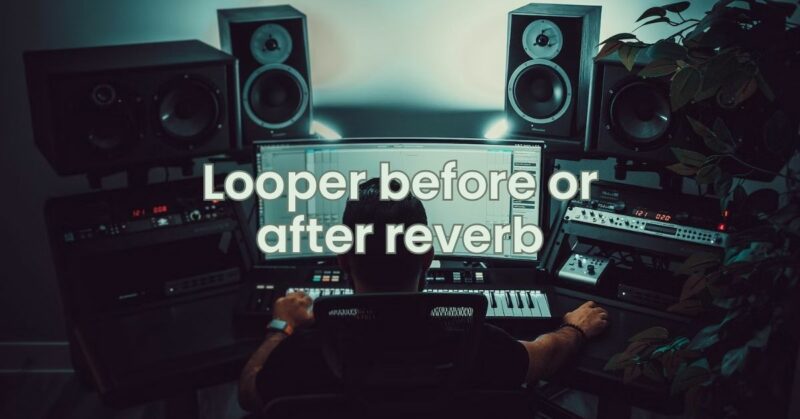Looper pedals are one of the most versatile effects pedals on the market. They can be used to create a variety of sounds, from simple loops to complex arrangements. But where should you put your looper pedal in your signal chain?
There are two main schools of thought on this topic: some people believe that looper pedals should be placed before the reverb, while others believe that they should be placed after the reverb.
Arguments for putting looper before reverb:
- Placing looper before reverb allows you to capture the dry signal of your guitar before it is affected by the reverb. This means that you can loop a clean guitar part and then add reverb to it later.
- Placing looper before reverb can give you more control over the overall sound of your loops. For example, you can use the reverb pedal to add depth and ambience to your loops, without affecting the original sound of your guitar.
- Some looper pedals have their own reverb effect, which can be used to create a more complex and textured sound.
Arguments for putting looper after reverb:
- Placing looper after reverb allows you to loop a reverbed guitar part and then add other effects to it later.
- Placing looper after reverb can give you a more ambient and atmospheric sound. This is because the reverb will be applied to the entire loop, creating a sense of space and depth.
- Some looper pedals have a built-in delay effect, which can be used to create a more rhythmic and complex sound.
Which is the best option?
The best way to decide whether to put your looper pedal before or after reverb is to experiment with both and see what sounds best to you. There is no right or wrong answer, and the best option for you will depend on your individual preferences and the type of music you play.
Here are some general recommendations:
- If you want to capture the dry signal of your guitar before it is affected by the reverb, you may want to put your looper pedal before the reverb.
- If you want more control over the overall sound of your loops, you may want to put your looper pedal before the reverb.
- If you want to create a more ambient and atmospheric sound, you may want to put your looper pedal after the reverb.
- If you want to create a more rhythmic and complex sound, you may want to put your looper pedal after the reverb.
Ultimately, the best way to decide is to experiment with both and see what sounds best to you.
I hope this article helps you decide which option is best for you.
Here are some additional things to consider when deciding where to put your looper pedal:
- The type of looper pedal you have. Some looper pedals have their own reverb effect, which can be used to create a more complex and textured sound. If you have a looper pedal with a reverb effect, you may want to put it after the reverb to take advantage of this feature.
- The type of amp you have. Some amps have a built-in reverb effect. If your amp has a built-in reverb effect, you may not need to use a separate reverb pedal.
- The type of music you play. If you play a lot of ambient music, you may want to put your looper pedal after the reverb to create a more atmospheric sound. If you play a lot of rock music, you may want to put your looper pedal before the reverb to capture the dry signal of your guitar before it is affected by the reverb.
Experimentation is the best way to decide where to put your looper pedal. Try both placement options and see what sounds best to you.


